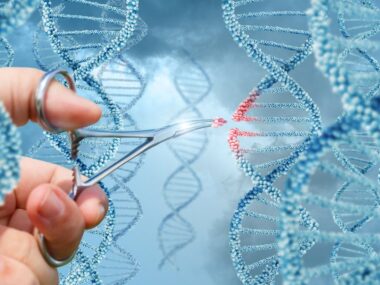FAST Supports UPenn Research Into microRNA as Angelman Therapy
Written by |

Sergey Nivens/Shutterstock
The Foundation for Angelman Syndrome Therapeutics (FAST) has opened a program supporting new research into treating Angelman syndrome by using microRNA (miRNA) to boost UBE3A protein levels.
FAST will collaborate with the Gene Therapy Program at the University of Pennsylvania (UPenn) to design this potential therapy, the organization announced in a press release.
Angelman syndrome occurs when the UBE3A gene that a person inherits from their mother either malfunctions or is deleted entirely. Each person generally receives two copies of every gene, one from each parent.
Often, one healthy gene can compensate for the loss of the other. But the paternal copy of UBE3A — that inherited from a father — is silenced within the neurons of certain parts of the brain.
This silencing is carried out by a molecule called UBE3A antisense transcript (UBE3A-AS), which essentially serves as a finger holding the gene in an off position, much like a light switch.
This paternal copy might be “unsilenced” through the use of biological molecules such as miRNA and related biotechnologies, which can target UBE3A-AS to prevent it from working in that way. An active paternal UBE3A is then expected to allow UBE3A protein to be made from that gene.
So far, antisense oligonucleotides (ASOs) under research as possible Angelman therapies have been unable to permanently unsilence paternal UBE3A, leading to the need for repeat treatments. (ASOs are small molecules that can bind to RNA — the template molecule for protein production — and degrade it or change how it is processed.)
FAST and its collaborators think that miRNA may provide a way toward a more long-term therapy, while also avoiding issues related to the UBE3A hyperactivity seen in gene replacement efforts. Researchers with the Department of Medicine at the UPenn have suggested that selective miRNA targeting of UBE3A-AS might provide a lasting therapeutic effect with a single dose.
Studies in mice have provided some preliminary evidence in favor of this strategy.
Interfering with UBE3A-AS in a mouse model of Angelman resulted in paternal UBE3A activity, which rescued some Angelman symptoms in those mice.
Scientists participating in the new project will build upon previous research involving the targeting of UBE3A-AS with the CRISPR-Cas9 gene editing technology to design experiments aimed at identifying candidate miRNA therapies within one year.
“Building on the success of the ASO therapies for Angelman,” said James Wilson, MD, PhD, a collaborator at UPenn, “we hope to restore functional paternal UBE3A protein with a single administration of gene therapy. An optimized microRNA should achieve long term clinical effects by stably knocking down the UBE3A antisense RNA.”





